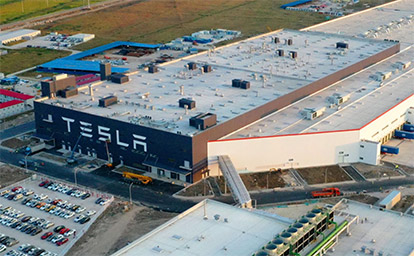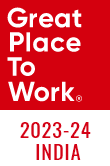Use an Adaptive Project Frameworkto Drive Innovation
- 7 minutes read
What’s more agile than agile? When faced with novel challenges or radically shifting project scope, an adaptive project framework takes the Agile Methodology further – empowering teams to navigate uncertainty, troubleshoot complexities, and drive innovation.

As organizations navigate the complex world of product development, the need for flexible methodologies has become more apparent than ever. Agile methodologies have revolutionized product management, enabling iterative development, rapid feedback loops, and customer collaboration.
But what happens when you face challenges that lie beyond the reach of traditional frameworks – unknowns, unprecedented situations, or significant constraints?
This is where an adaptive project framework shines, providing added agility to navigate uncertainty and innovate effectively.
The Evolution: From Waterfall to Agile to Adaptive
In the journey of product management, the transition from waterfall to agile represented a pivotal shift. Agile allows teams to respond to change, embrace feedback, and prioritize collaboration.
- An Adaptive Project Framework is a strategic and highly flexible approach to project management that is particularly useful in responding to uncertainty and evolving conditions. It leverages rapid learning, scenario planning, and dynamic resource allocation to drive innovation and achieve project goals.
“Agility is the ability to adapt and respond to change… Agile organizations view change as an opportunity, not a threat.” ~ Jim Highsmith, co-author of the Agile Manifesto
Agile frameworks like Scrum, Kanban, and Lean prioritize:
- Responding to change instead of simply following a plan
- Delivering value incrementally
- Continuous feedback loops
While these principles make agile methodologies more flexible than waterfall, they are not always sufficient for solving challenges that are entirely new or involve high uncertainty.

The Case for Adaptive Product Management
An adaptive approach takes agility to the next level, enabling teams to innovate under conditions where:
- Problems or solutions are unprecedented
- Environments are volatile or uncertain
- Resources or skills are initially lacking
- Project scopes shift dramatically in the middle of development
- Integration complexities arise, requiring on-the-fly troubleshooting
By embracing continuous discovery and rapid learning cycles, adaptive product management supports quick pivots, rapid prototyping, and real-time decision-making.
Key elements include:
- Scenario Planning: Preparing for multiple potential outcomes.
- Flexible Resource Allocation: Scaling teams and budgets dynamically.
- Cross-Functional “War Rooms:” Enabling rapid problem-solving.
- Real-Time Data-Driven Prioritization: Making decisions as new information emerges.
Real-World Examples Applying Adaptive Project Framework
1. Tesla Production
Tesla’s adaptive approach to achieving volume production at its Shanghai Gigafactory is legendary. Faced with deadlines unheard of before in automotive manufacturing, insufficient external financing, and new-to-the-world innovations, Tesla tackled the challenge with:
- An “Empowerment” Culture: Tesla’s “Anti-Handbook Handbook” empowered employees to act independently and innovate.
- Rapid Iteration Cycles: In certain cases, there were more than 20 changes made on a single production line in a week – some were even put into production within half an hour of creation!
- Incremental Scaling: Expanding factory operations in phases, starting with small setups like a tent that later turned into an area on the manufacturing floor.
- Value Stream Optimization: Refactoring the entire production system for efficiency, instead of just a single swim lane.
While the process was grueling – dubbed by some as “production hell” – Tesla achieved breakthroughs in battery casing design, Giga press implementation, and overall operational efficiency.

2. New Platform Development
Not every example is quite as storied or dramatic. At CoStrategix, we were working on a new product platform for a client using agile development. Midway through the project, our client’s end-users demanded new features that dramatically altered the product scope. In addition, they significantly shrank the timeline, requesting work to be completed within a week!
We pivoted to an adaptive approach by:
- Building a Rapid-Decision Team: Aligning with leaders from across our client’s organization to make decisions fast
- Aligning with Our Client on Financial Risk: Proceeding without comprehensive scoping due to time constraints
- Scaling Resources: Adding product managers, developers, and QA testers overnight
- Concurrent Development: Building requirements alongside development (flying the plane while it was still in development)
The result was a successfully delivered project, showcasing how adaptive management can thrive under pressure.
3. Innovation Labs
There are also times when we work with clients to innovate and create new-to-the-world products or technical capabilities. In these cases, we may run a Proof of Concept (POC) through our Gixer Labs – our internal innovation lab.
Gixer Labs was created with the goal to:
- Experiment with proof of concepts (POCs) for unconventional solutions
- Conduct internal R&D to build cutting-edge capabilities
- Enhance or launch new services, pushing the boundaries of traditional problem-solving
Not only do we work on client projects in our Gixer Labs, but we also may run internal tests through the program – for instance, when we need to get up to speed quickly on an emerging technology or choose to build a new framework that will be used across client projects. Our internal Gixer Innovation Lab operates with an adaptive mindset, embracing uncertainty to develop a new path forward.
Guidelines for Choosing the Right Methodology
An adaptive approach isn’t without its challenges. For example, an adaptive project framework can be significantly more resource-intensive. Maintaining alignment across stakeholders without clear milestones (for instance, in the New Platform Development example above) can be difficult. Also, there’s a higher risk of product failure when the path forward is uncertain. The world is littered with good ideas that failed due to the financial risks associated with adaptive project management.
Consider these factors when deciding which approach to take:

Conclusion
Adaptive project management is not a replacement for agile methodologies but an extension for tackling the unknown. By embracing uncertainty and fostering rapid learning, adaptive project management empowers teams to deliver innovation, even in volatile environments.
CoStrategix is a digital transformation services company that brings a strategic approach to product and platform development. Our strength is helping clients leverage technology to achieve their business goals in complex environments. Whether you’re modernizing legacy systems or developing new digital products, our approach ensures flexibility, minimizes risk, and delivers measurable value aligned with your strategic objectives. Have a product development or modernization project on the horizon? Give us a call.
AI Strategy & Solutions – Elevate your business with advanced analytics
Data & Insights – Drive insights that lead to competitive advantage
Product Development – Build platforms that power unique digital capabilities
Platform & Technology Modernization – Modernize for stellar experiences, efficiency, and AI
Related Blog Posts
6 Frameworks To Ensure A Product Market Fit
December 18, 2024
Building Usability and Accessibility into Digital Products
October 16, 2024
How Low-Code/No Code Can Help Business Teams Deliver Value Quickly
January 23, 2023
The Future of SSRS, SSIS, and Microsoft Fabric
September 20, 2024







